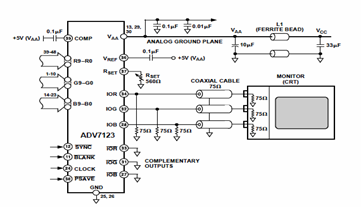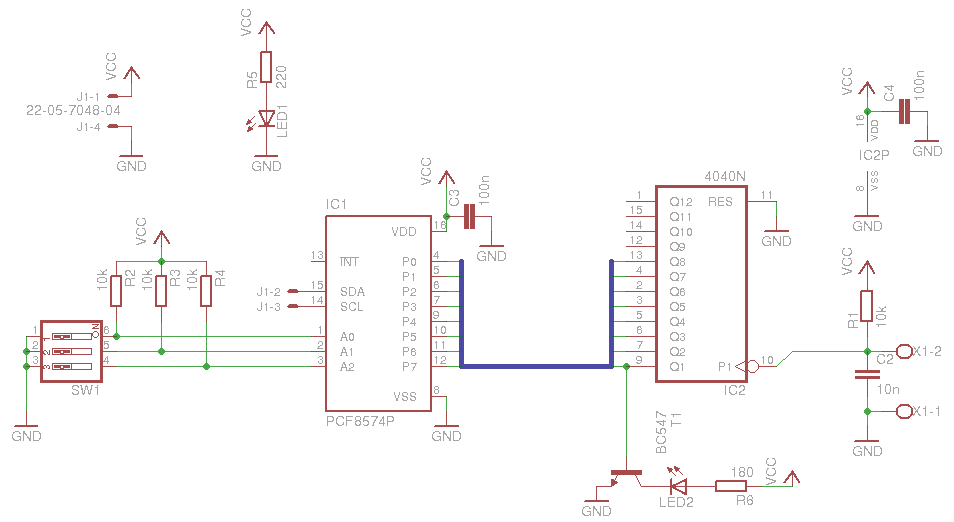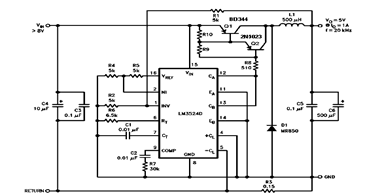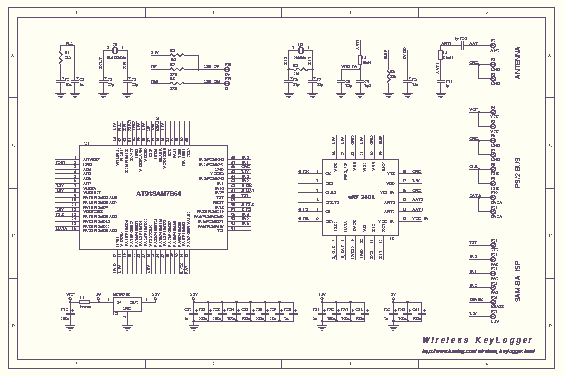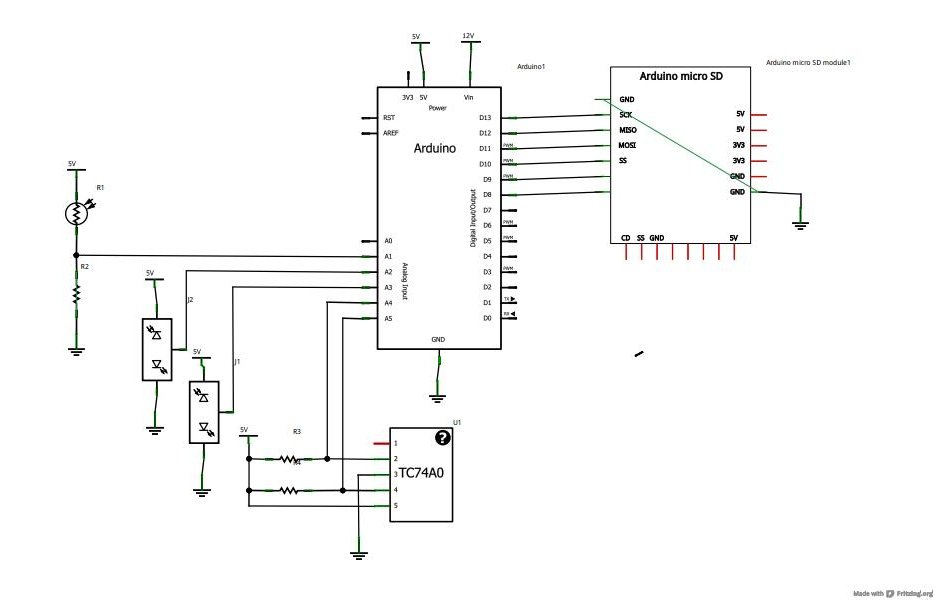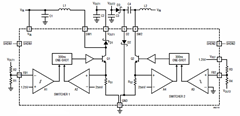
Electrocardiagram (ECG / EKG) for DrDAQ Data Logger
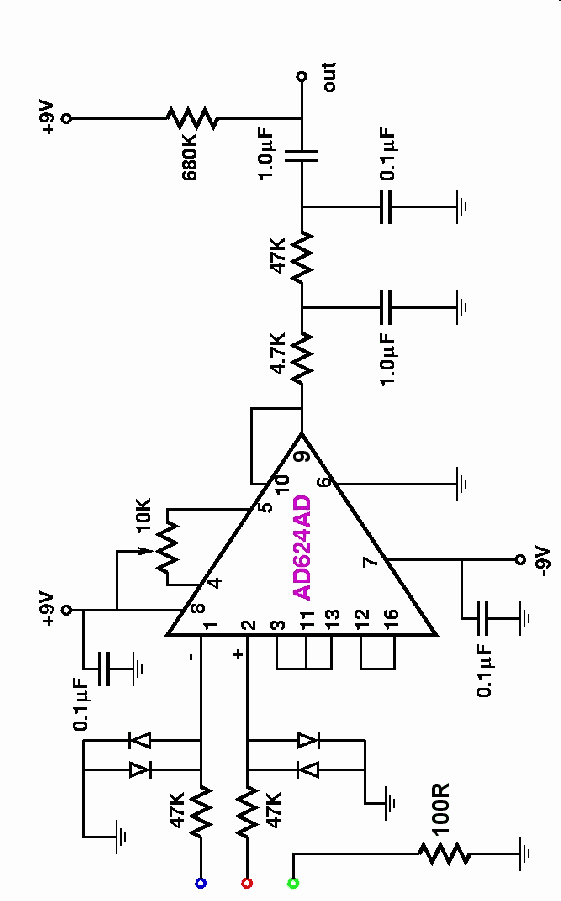
An electrocardiogram (ECG), also known as EKG (derived from the German term Elektro-Kardiographie), is an electrical recording of the heart utilized in diagnosing heart disease. This application employs a DrDAQ Data Logger to read and store electrocardiograms. British physiologist Augustus D. Waller pioneered electrocardiography, publishing the first human electrocardiogram in 1887. In 1911, Waller expressed skepticism about the widespread use of electrocardiography in hospitals, suggesting it would only be occasionally useful for documenting rare cardiac anomalies. However, just 13 years later, Dutch physiologist Willem Einthoven received the Nobel Prize in Medicine for transforming this physiological phenomenon into an essential clinical recording device still in use today. The ECG serves as a surface measurement of the electrical potential generated by the electrical activity in cardiac tissue. The flow of ions signals the contraction of cardiac muscle fibers, leading to the heart's pumping action. The ECG is a valuable, non-invasive diagnostic tool that was first clinically utilized in 1913 with Einthoven's invention of the string galvanometer. Einthoven's original recordings are known as the "three lead" ECG, where measurements are taken from three points on the body, forming the "Einthoven triangle," an equilateral triangle with the heart at its center. The difference in potential readings from leads L1 and L2 is used to produce the ECG output trace, while the L3 connection provides a common ground for the body and the recording device (oscilloscope). Establishing the relationship between the ECG trace and the electrical events in the heart is referred to as the inverse problem of electrocardiology, which involves determining the electric sources from the potential generated by those sources on the body's surface. The ECG device was constructed based on an article by Shawn Carlson in the June 2000 issue of Scientific American, which outlines a circuit layout using an instrumental amplifier for ECG measurement. The circuit underwent modifications, and a DrDAQ data acquisition card was utilized to read the output signal into a laptop, effectively functioning as a storage oscilloscope. The basic setup is illustrated below. The electronic circuit for the ECG application closely resembles the one described in Carlson's article. The circuit diagram features an AD624AD Instrumentation Amplifier from Analog Devices at its core. This amplifier receives inputs from self-sticking electrodes attached to the subject's body. Due to the small size of the signals and the amplifier's susceptibility to noise, it is crucial for the cables connecting the electrodes to the circuit inputs (represented as blue, red, and green circles in the diagram) to be as short as possible and well-shielded. RG-174 50 Ohm coaxial cables with Lemo connectors were selected for their durability, lightweight design, and ease of connection to the aluminum sheet metal box housing the circuit. To address safety concerns associated with electrically connecting a person to a device powered by a significant power source, diode protection was added to the amplifier's inputs. The circuit operates on two 9-volt batteries, which do not constitute a significant power source; however, an oscilloscope or computer connected to the amplifier's output must be considered.
The ECG circuit design begins with the AD624AD Instrumentation Amplifier, which is chosen for its high common-mode rejection ratio and low noise characteristics, essential for accurately amplifying the small electrical signals generated by the heart. The self-sticking electrodes are strategically placed on the patient's skin to minimize motion artifacts and ensure reliable readings. The amplifier's gain can be adjusted to optimize the output signal for the data acquisition system.
The RG-174 coaxial cables used in the design are crucial for maintaining signal integrity. These cables are shielded to prevent electromagnetic interference, which could distort the ECG signal. The Lemo connectors facilitate secure connections, ensuring that the setup remains stable during operation.
Diode protection is implemented at the input stage of the amplifier to prevent any accidental high-voltage surges from damaging the sensitive electronics. This safety feature is particularly important in medical applications where patient safety is paramount.
The data acquisition system, utilizing the DrDAQ Data Logger, converts the amplified ECG signal into a digital format for analysis and storage on a laptop. This setup allows for real-time monitoring and long-term data collection, enabling healthcare professionals to review the patient's cardiac activity over time.
Overall, the described ECG circuit is a robust and effective solution for capturing and analyzing cardiac electrical signals, contributing significantly to the field of cardiology and patient care.An electrocardiogram or ECG (also known as EKG ” abbreviated from the German word Elektro-Kardiographie), is an electrical recording of the heart and is used in the investigation of heart disease. This application makes use of a DrDAQ Data Logger to read and store electrocardiograms. British physiologist Augustus D. Waller was the pioneer of ele ctrocardiography and in 1887 published the first human electrocardiogram. Yet in 1911 Waller said, "I do not imagine that electrocardiography is likely to find any very extensive use in the hospital. It can at most be of rare and occasional use to afford a record of some rare anomaly of cardiac action.
" However, just 13 years later, the Nobel Prize in Medicine was awarded to Dutch physiologist Willem Einthoven, who transformed this curious physiologic phenomenon into an indispensable clinical recording device that is still used today. The electrocardiogram, or ECG / EKG is a surface measurement of the electrical potential generated by electrical activity in cardiac tissue.
Current flow, in the form of ions, signals contraction of cardiac muscle fibers leading to the heart`s pumping action. The ECG is a valuable, non invasive diagnostic tool which was first put to clinical use in 1913 with Einthoven`s invention of the string galvanometer.
The results below show a reproduction of one of Einthoven`s original traces. Einthoven`s recording is known as the "three lead" ECG, with measurements taken from three points on the body (defining the "Einthoven triangle" ” an equilateral triangle with the heart at the centre. ) The difference between potential readings from L1 and L2 is what is used to produce the output ECG trace.
The L3 connection establishes a common ground for the body and the recording device (oscilloscope. ) Establishing the correspondence between the ECG trace and the electrical events in the heart is known as the inverse problem of electrocardiology: solving for the electric sources from the potential generated by those sources on the surface of the body. The ECG device was constructed based on the "Amateur Scientist" article by Shawn Carlson that appeared in the June 2000 issue of Scientific American.
That article describes the layout for a circuit based on an instrumental amplifier that can be used to measure the ECG. The circuit was built with some modifications as described below, and a DrDAQ data acquisition card was used to read out the output signal into a laptop, which effectively functions as a storage scope.
The basic setup is illustrated below. As previously mentioned, the electronic circuit for the ECG application is similar to the one described in Shawn Carlson`s Scientific American article. The circuit diagram is shown below. At the heart of it is an AD624AD Instrumentation Amplifier from Analog Devices. The amplifier takes inputs from self-sticking electrodes that are attached to the body of the subject whose ECG is being taken.
Because the signals are small, and the amplifier can be susceptible to various noise sources, it is important for the cables connecting the electrodes to the inputs of the circuit (shown as the blue, red and green circles in the diagram) to be (1) as short as possible and (2) well shielded. RG-174 50 Ohm coaxial cables with lemo connectors were chosen as these cables are good to use for this project because they are sturdy, yet thin and light, and the lemo connectors are easy to plug and unplug into the aluminum sheet metal box that was used to house the circuit.
Because of the safety issues associated with electrically connecting a person to an electronics device that runs off a significant power source, diode protection was added to the inputs to the amplifier. The circuit shown above only runs off of two 9 volt batteries, which themselves don`t constitute a "significant power source", however an oscilloscope or computer to which the output of the amplifier is connected wi
🔗 External reference
The ECG circuit design begins with the AD624AD Instrumentation Amplifier, which is chosen for its high common-mode rejection ratio and low noise characteristics, essential for accurately amplifying the small electrical signals generated by the heart. The self-sticking electrodes are strategically placed on the patient's skin to minimize motion artifacts and ensure reliable readings. The amplifier's gain can be adjusted to optimize the output signal for the data acquisition system.
The RG-174 coaxial cables used in the design are crucial for maintaining signal integrity. These cables are shielded to prevent electromagnetic interference, which could distort the ECG signal. The Lemo connectors facilitate secure connections, ensuring that the setup remains stable during operation.
Diode protection is implemented at the input stage of the amplifier to prevent any accidental high-voltage surges from damaging the sensitive electronics. This safety feature is particularly important in medical applications where patient safety is paramount.
The data acquisition system, utilizing the DrDAQ Data Logger, converts the amplified ECG signal into a digital format for analysis and storage on a laptop. This setup allows for real-time monitoring and long-term data collection, enabling healthcare professionals to review the patient's cardiac activity over time.
Overall, the described ECG circuit is a robust and effective solution for capturing and analyzing cardiac electrical signals, contributing significantly to the field of cardiology and patient care.An electrocardiogram or ECG (also known as EKG ” abbreviated from the German word Elektro-Kardiographie), is an electrical recording of the heart and is used in the investigation of heart disease. This application makes use of a DrDAQ Data Logger to read and store electrocardiograms. British physiologist Augustus D. Waller was the pioneer of ele ctrocardiography and in 1887 published the first human electrocardiogram. Yet in 1911 Waller said, "I do not imagine that electrocardiography is likely to find any very extensive use in the hospital. It can at most be of rare and occasional use to afford a record of some rare anomaly of cardiac action.
" However, just 13 years later, the Nobel Prize in Medicine was awarded to Dutch physiologist Willem Einthoven, who transformed this curious physiologic phenomenon into an indispensable clinical recording device that is still used today. The electrocardiogram, or ECG / EKG is a surface measurement of the electrical potential generated by electrical activity in cardiac tissue.
Current flow, in the form of ions, signals contraction of cardiac muscle fibers leading to the heart`s pumping action. The ECG is a valuable, non invasive diagnostic tool which was first put to clinical use in 1913 with Einthoven`s invention of the string galvanometer.
The results below show a reproduction of one of Einthoven`s original traces. Einthoven`s recording is known as the "three lead" ECG, with measurements taken from three points on the body (defining the "Einthoven triangle" ” an equilateral triangle with the heart at the centre. ) The difference between potential readings from L1 and L2 is what is used to produce the output ECG trace.
The L3 connection establishes a common ground for the body and the recording device (oscilloscope. ) Establishing the correspondence between the ECG trace and the electrical events in the heart is known as the inverse problem of electrocardiology: solving for the electric sources from the potential generated by those sources on the surface of the body. The ECG device was constructed based on the "Amateur Scientist" article by Shawn Carlson that appeared in the June 2000 issue of Scientific American.
That article describes the layout for a circuit based on an instrumental amplifier that can be used to measure the ECG. The circuit was built with some modifications as described below, and a DrDAQ data acquisition card was used to read out the output signal into a laptop, which effectively functions as a storage scope.
The basic setup is illustrated below. As previously mentioned, the electronic circuit for the ECG application is similar to the one described in Shawn Carlson`s Scientific American article. The circuit diagram is shown below. At the heart of it is an AD624AD Instrumentation Amplifier from Analog Devices. The amplifier takes inputs from self-sticking electrodes that are attached to the body of the subject whose ECG is being taken.
Because the signals are small, and the amplifier can be susceptible to various noise sources, it is important for the cables connecting the electrodes to the inputs of the circuit (shown as the blue, red and green circles in the diagram) to be (1) as short as possible and (2) well shielded. RG-174 50 Ohm coaxial cables with lemo connectors were chosen as these cables are good to use for this project because they are sturdy, yet thin and light, and the lemo connectors are easy to plug and unplug into the aluminum sheet metal box that was used to house the circuit.
Because of the safety issues associated with electrically connecting a person to an electronics device that runs off a significant power source, diode protection was added to the inputs to the amplifier. The circuit shown above only runs off of two 9 volt batteries, which themselves don`t constitute a "significant power source", however an oscilloscope or computer to which the output of the amplifier is connected wi
🔗 External reference
